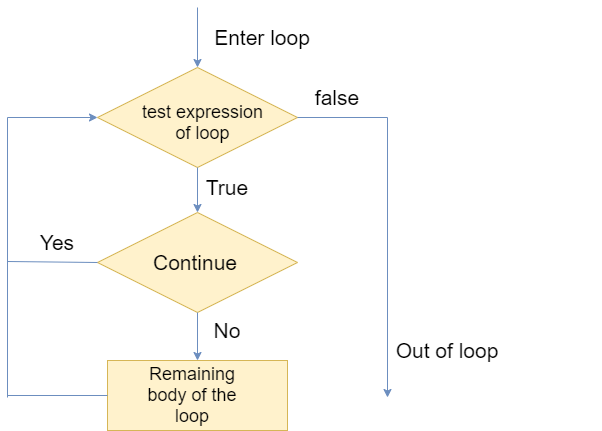Python break statement
The break is a keyword in python which is used to bring the program control out of the loop. The break statement breaks the loops one by one, i.e., in the case of nested loops, it breaks the inner loop first and then proceeds to outer loops. In other words, we can say that break is used to abort the current execution of the program and the control goes to the next line after the loop.
The break is commonly used in the cases where we need to break the loop for a given condition.
Python continue Statement
The continue statement in Python is used to bring the program control to the beginning of the loop. The continue statement skips the remaining lines of code inside the loop and start with the next iteration. It is mainly used for a particular condition inside the loop so that we can skip some specific code for a particular condition.The continue statement in Python is used to bring the program control to the beginning of the loop. The continue statement skips the remaining lines of code inside the loop and start with the next iteration. It is mainly used for a particular condition inside the loop so that we can skip some specific code for a particular condition.
Flow Diagram

Python Pass
In Python, the pass keyword is used to execute nothing; it means, when we don't want to execute code, the pass can be used to execute empty. It is the same as the name refers to. It just makes the control to pass by without executing any code. If we want to bypass any code pass statement can be used.
It is beneficial when a statement is required syntactically, but we want we don't want to execute or execute it later. The difference between the comments and pass is that, comments are entirely ignored by the Python interpreter, where the pass statement is not ignored.



0 Comments